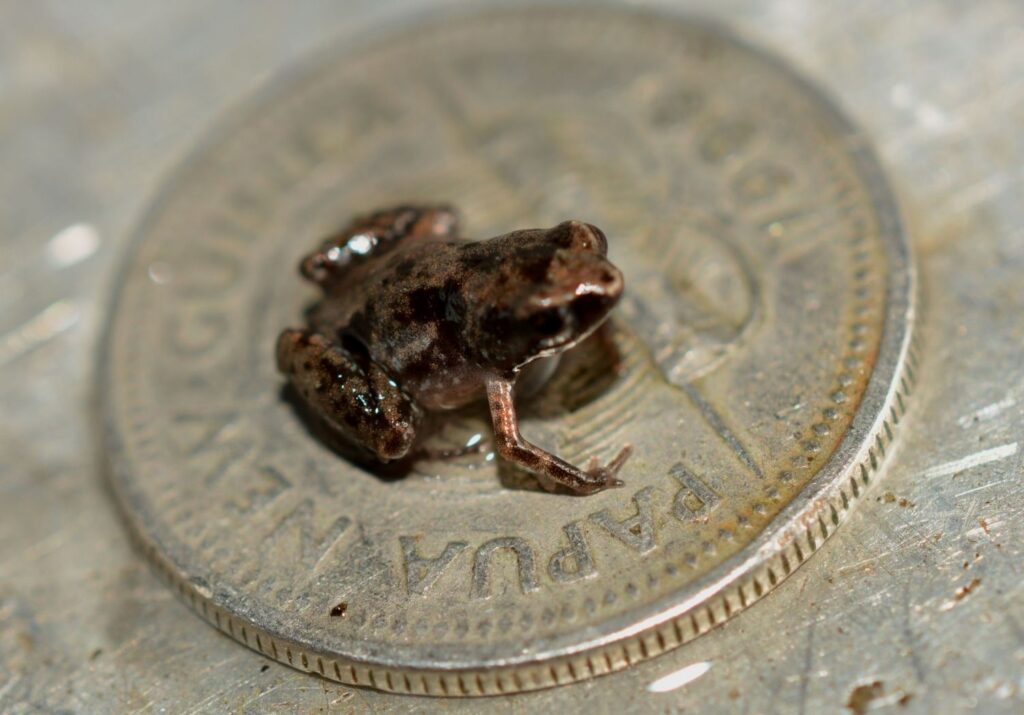
Frogs, conservation and the importance of local knowledge
On World Frog Day, we reflect on the exceptional biodiversity in Papua New Guinea and the conservation efforts of our partners.
Papua New Guinea is known for its incredible wildlife, accounting for 7% of the world’s biodiversity on just 1% of the world’s land surface. The islands of New Guinea host exceptional plants and animals. There are kangaroos that live in trees, singing dogs, frogs as tiny as a pencil tip, and trees that kill birds to fertilise their soil. Papua New Guinea is also home to around 280 species of frog found nowhere else in the world, currently under threat from mass deforestation and water pollution from mining.
Linking local biodiversity knowledge with science
Cool Earth works closely with Papua New Guinea universities and schools to bring together local biodiversity knowledge with science. The schools we work with develop teaching resources that link the national biology curriculum to the rainforest. These include local wildlife, maps and information the rainforest. On a practical level, our Biodiversity Officers engage children with the wildlife and rainforest around them. They do this using camera traps, trips into the rainforest and interactive workshops.

During one of the University of Goroka’s research trips to Wabumari, members of the local community trekked into the forest with the researchers, and learned how to capture and identify frogs from guide books and scientific keys. Sixteen species were found, including this tiny microhylid frog, and it is thought that some of these may be new discoveries.

Involving local communities in conservation
This sharing of information between local communities and academics, combining traditional knowledge with scientific methods, is crucial if we are to achieve successful conservation outcomes. Indigenous Peoples and local communities are best placed to protect and manage their forests and we need to recognise their role in conservation.
Click here to learn more about our work in Papau New Guinea.